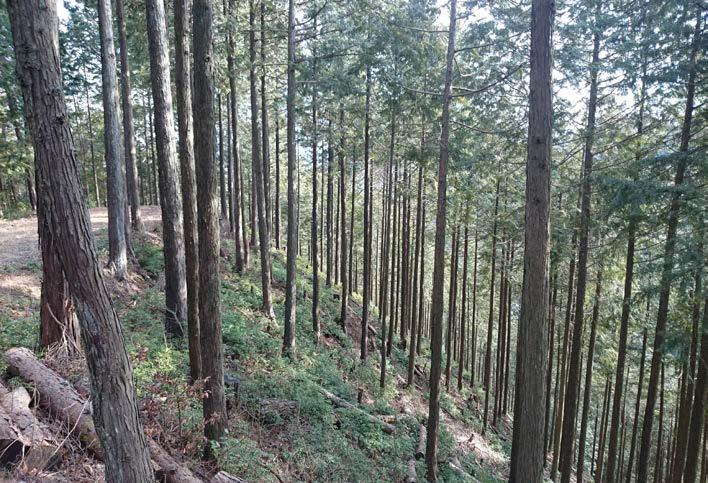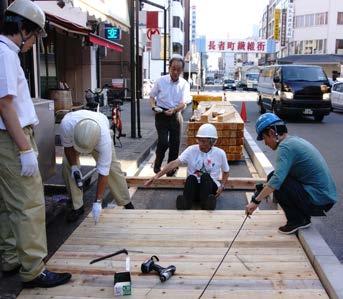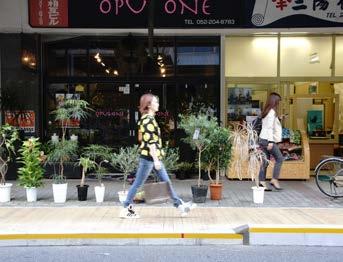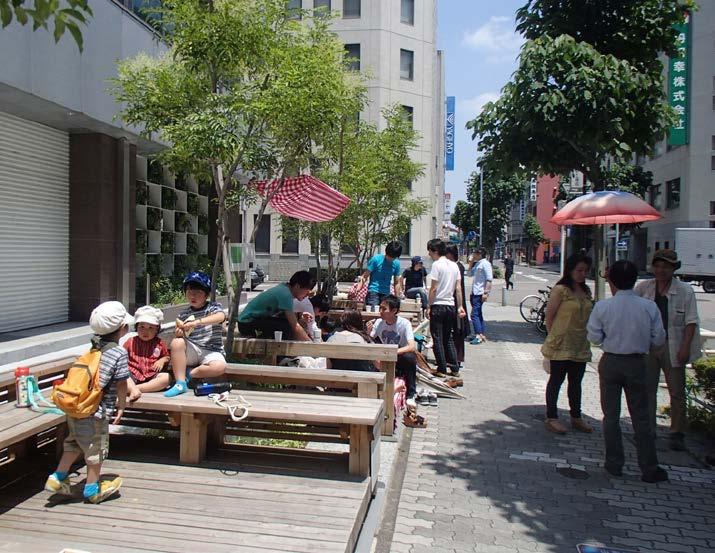
6 minute read
CONNECTING PUBLIC SPACES AND BASINS WITH WOOD
from THE CITY AT EYE LEVEL ASIA
by STIPO
Hiroyoshi Morita (Nippon Engineering Consultants Co., Ltd.), Akito Murayama (The University of Tokyo) &Yasutoshi Sasaki (Nagoya University)
WHAT IS THE WOODISM CITY PROJECT?
Advertisement
Approximately 60% of Japanese forests are planted forests. However, wood consumption in the country has decreased due to the decline in wood prices, and forest management has become insufficient due to the low number of forestry workers. Forest devastation is an important issue for the entire basin and can lead to problems such as ecosystem collapse and higher flood risks in downstream urban areas. In addition, trees generally have the effect of sequestering a lot of carbon as they grow, but as they age, their elongation stops and the amount of carbon sequestered slows down. One way to mitigate climate change could be to maximize the carbon sequestration effect of the forest by creating a circulation system in which trees that have stopped growing are immobilized elsewhere as wood and new trees are planted in the forest.
Woodism is a project which does this by promoting the use of domestic timber in urban environments, and building a distribution system that addresses the challenges of biodiversity, climate change and the forest industry. The Nishiki-2 area, located in the centre of Nagoya, is the pilot implementation area for the Woodism City project. This district once flourished as a wholesale textile district; however, changes in industrial structure have resulted in a decrease of the resident population, an increase in vacant buildings, and a deterioration of public order. Since the 2000s, the town development council — organised primarily by local SMEs — has begun to revitalise the district, and is promoting this project as one of its initiatives. The authors of this article are members of this project, participating in its planning and production, and supporting research during social experiments.
FIRST ACTION: THE ‘STREET WOOD DECK’ PROJECT AT 2012
The first initiative in the Nishiki-2 area involved the construction of community spaces using wood. Road space occupies 30% of this area, yet there are no parks or rest zones in this district. Curb parking, which was once permitted for logistical reasons, had become non-utilised space. The ‘Street Wood Deck’ project aimed to create a large seating area the same size as a standard parking lot. The idea was inspired by parklets, a movement which started in San Francisco. Three wooden benches were created in collaboration with researchers, architects, local residents, and students. The setup remained throughout the initial event in August 2012, but could not be permanently

installed on the roadway under current Japanese law and so was moved to a private site. Still, this initiative led to the development of the basic principle of the Woodism City project, which champions the participation of local residents in their own construction and application of wood in public spaces.
SECOND PUBLIC SPACE CHALLENGE
In 2014, the district was given the opportunity to once again challenge the design of public spaces. This took the form of a halfyear social experiment to widen the district’s sidewalks. When the town development council first proposed using wood as the primary material, the road and traffic management section of the local government refused. As a countermeasure, the council promised to verify the performance standards for any use of road spaces (including loading and sliding tests), to secure liability for accidents that might occur during the social experiment, and to manage the roads

Construction of the wooden sidewalk by residents (top). The walkway and a pedestrian (bottom).
during flood and snowfall events. Once opened, the wooden walkway, which was partly constructed by the residents themselves, produced various responses. Many people not only actively walked along the deck but also chose to talk and rest along the walkway. On certain occasions, performers used the space. A survey found that 10% of pedestrians in the area had started walking on the widened walkway. In the questionnaire, over 90% of the responses supported the use of wood. On the road narrowed by the widening of the sidewalk, the number of reverse vehicles was reduced to less than half and the traffic speed was reduced by 10%, contributing to the creation of a pedestrian-friendly environment.
SPREAD OF WOODISM
Since this challenge began, wood has been used in more and more locations within the district, such as in the ground floors of buildings, restaurant terraces, the interiors of information centres, on long benches in private open spaces, and at artist exhibition booths. Initially, researchers, students, and residents were the primary participants; now, there are diverse members including forestry managers, lumber companies and artists. At the beginning of the project, the only funding came from the research university, while donations from local companies contributed to the sidewalk widening social experiment. Currently, funding sources are diversifying, with more funding coming in from store owners and local governments.

The ‘Street Wood Deck’.
By using the drying process of timber in parallel with its use in public spaces, the recycling of wood in the district has begun. Wood once used in public spaces is now being reused for interior decoration and insulation in the same area.
POTENTIAL AND CHALLENGES TO ORGANIC URBAN DESIGN
What has allowed this project to develop? At this point it’s useful to discuss the relationship between the project and the physical properties of wood, as well as the various efforts of those involved.
First, wood is a material that is easier to process than modern materials such as concrete. Even though some tools are necessary, anyone with minimal skills (which can easily be learned) can participate in the production of wooden objects. The second point is that wood has various functions as an organic material. Its properties include strength, heat insulation, heat retention, and moisture absorption. Therefore, it is a material that can be used in a variety of applications, from structural road materials to small fixtures and interiors. All things considered, it is ideal for encouraging the participation of people in various fields and for generating new ideas.
Japanese cities have depended on modern materials such as concrete, iron, and asphalt since modern times. As a result, the connection between the city and the basin has been cut off and citizens have been deprived of the opportunity to become involved in city planning in a hands-on capacity. The Woodism City project is an effort to create a new urban landscape and restore active citizenship.
This project asks us to pay attention to the materials that make up our cities. Why are certain furniture made the way they are? Have you ever wondered where their raw materials came from? Learning about the nature of each material helps in thinking about the safety of the place and the activity you want to trigger. It leads to thinking about local economic circulation as well as material circulation. In order to create places we can be proud of, it’s important to use not only our eyes but also our sense of touch.
DO’S
When paying attention to the use of materials, you should aim not just for a change of use of public space but also how these materials can contribute to higher goals like boosting the local economy or combating climate change.
DON’TS
Don’t think you’re done after the completion of the initial design. Make sure to think of more than one phase to test the design’s functionality, location choice and impact. Challenge your design and create space for improvements.








